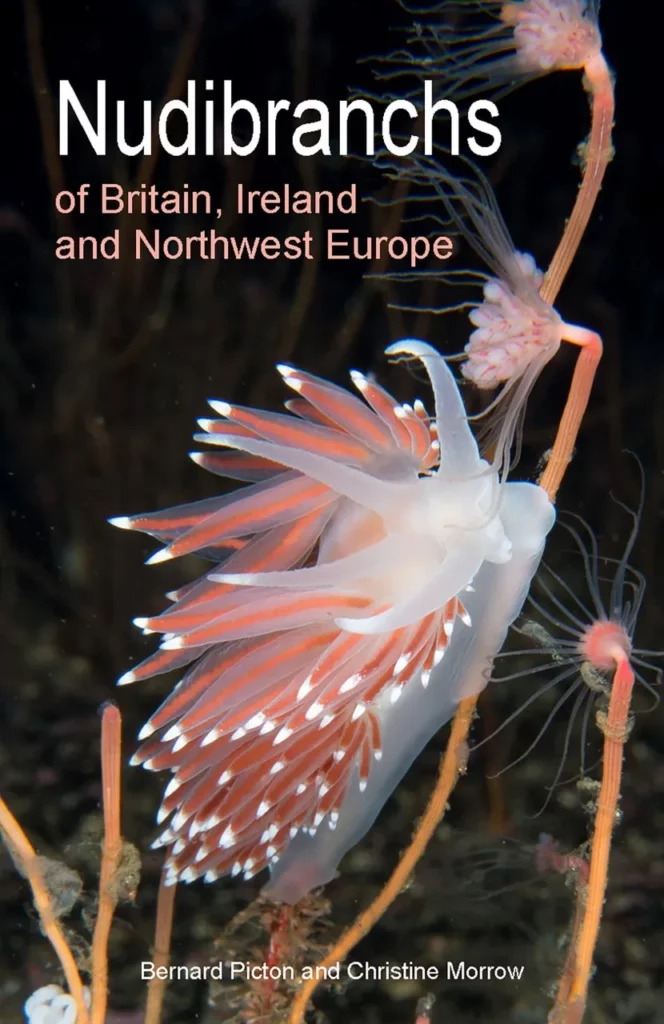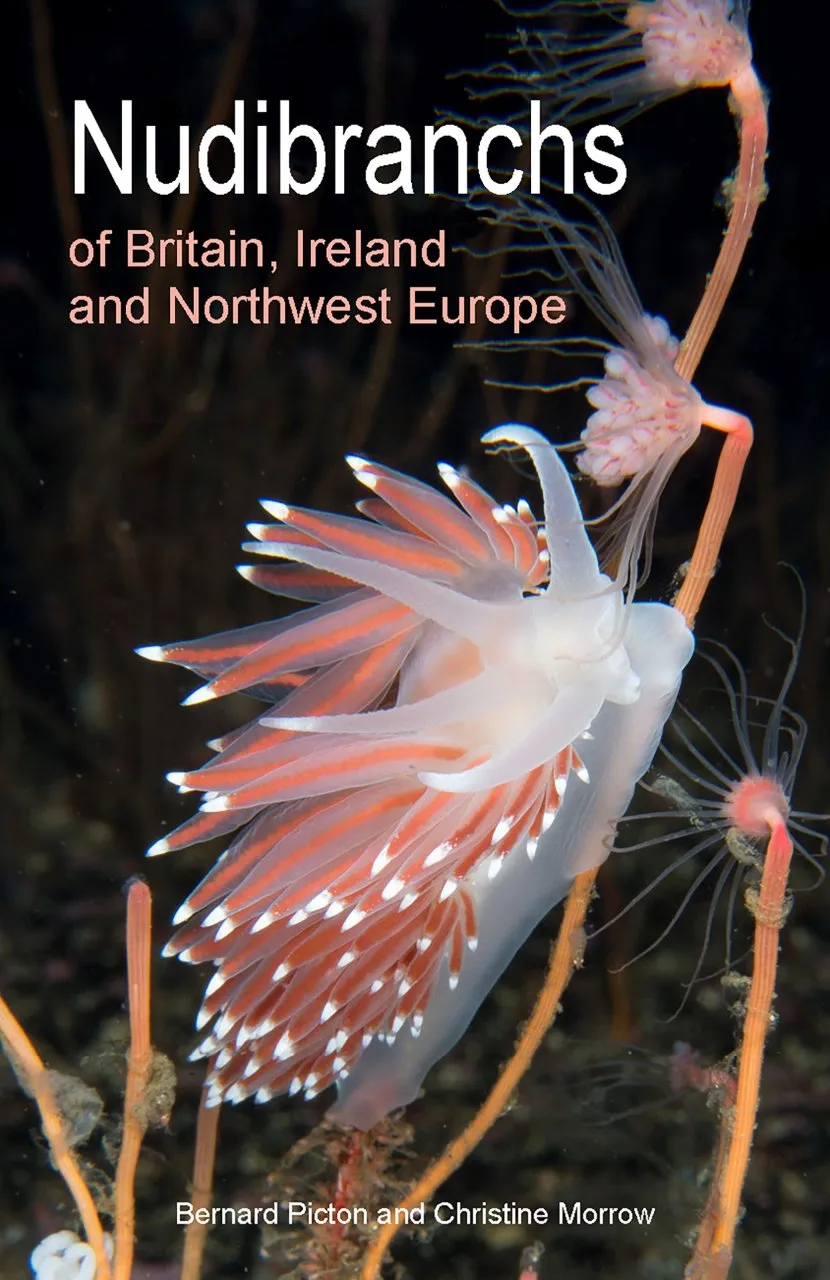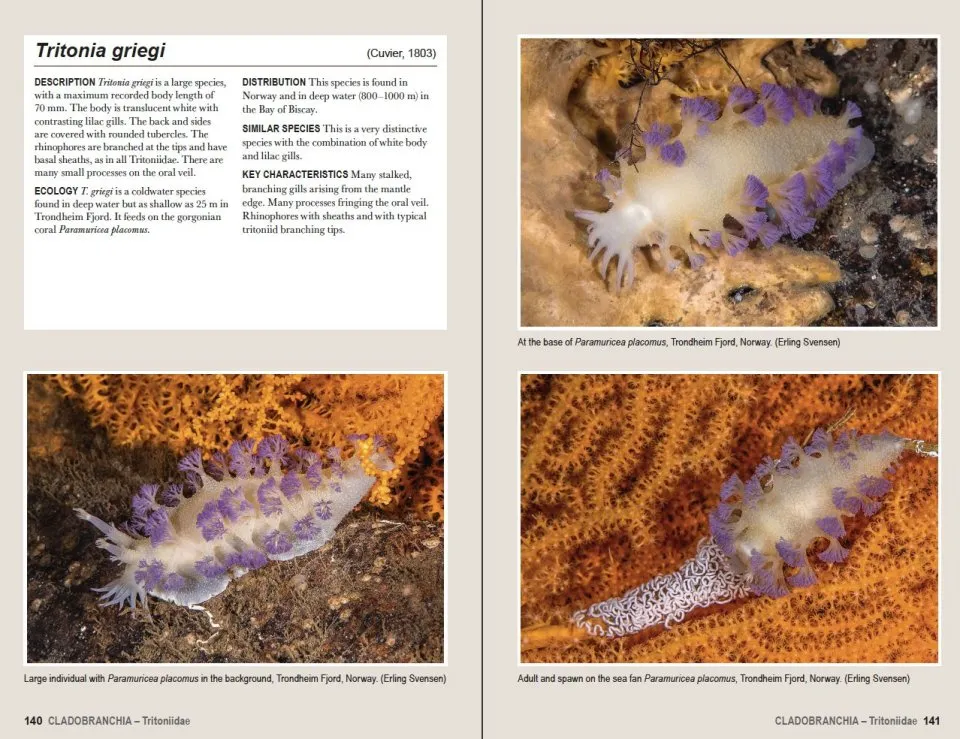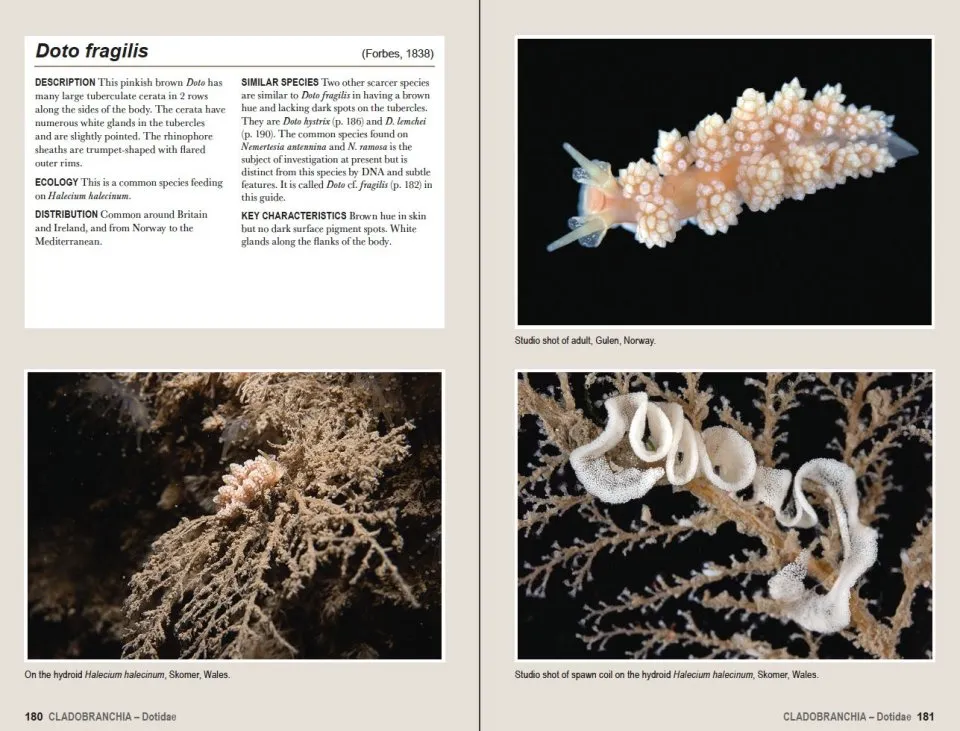Every subset of natural history has certain groups that attract a disproportionate amount of attention; the orchids among wildflowers, for example, or the butterflies in the Lepidoptera. In the marine world, it is the nudibranchs which seem to have the perfect combination of beauty, challenge and intrigue to breed obsession in people. For what are essentially slugs, these have an impressive fanbase among the wider public, helped by their bright colours and perceived ‘cuteness’ (which perhaps does a disservice to these voracious predators).
Despite this popularity, books on nudibranchs of our region are few and far between, the last one being published in 1994 by the authors of this current guide. In what is essentially a revised and expanded version, this book brings us up to date with the numerous changes in taxonomy and distribution recorded in the time since then and expands its geographical scope to cover the area from north-western France to Norway. This is very much a field guide rather than an ecological monograph, the vast majority of space given to species accounts, which typically comprise a double-page spread with three images per species. Introductory sections on biology and recording are perfectly adequate but brief (covering 15 well-illustrated pages in total), so anyone wanting more on behaviour, ecology and evolution etc will need to look elsewhere. The revised list of food species provides a very useful starting point on where to look for specific nudibranchs, assuming you have some ability to recognise their sessile animal prey (often far trickier to identify than the slugs themselves).
View this book on the NHBS website
The public image of these small molluscs has certainly been helped by improvements in underwater photography (fans of the crisp, close-up photos seen on social media might be left underwhelmed by a typical real-life experience, squinting to make out details on a tiny brightly coloured blob) and this guide puts these to excellent use. This truly is a visual feast, showing the beauty of species that could fit comfortably on a fingernail in detail that would never be possible through examination with the naked eye. With the exception of the rarest nudibranchs, the photos have been fully updated and carefully selected for ease of comparison between species, with a combination of in situ and studio photos. The inclusion of images of the spawn, where available, is especially helpful given that – as the guide explains – this is often more conspicuous than the slugs themselves.
Prospective buyers should note that the text in the introduction and many of the species accounts is largely the same as that freely available (at the time of writing) in a web version of the previous guide (www.seaslug. org.uk/nudibranchs) – not a criticism as the original text is good, but anyone with only a passing interest might be able to make do with just the online version (you will miss out on the stunning new photographs, though). Some test comparisons, however, show small updates to most accounts, and there is of course entirely new text for recently-split species (there are a lot, thanks mostly to the rollout of DNA-sequencing techniques since the last book was published), those that are new to the area, and those excluded from the original because of its narrower geographic scope. And while only nudibranchs get a mention in the title, coverage does extend to more limited accounts for some non-nudibranch sea slugs, such as sea hares.
Criticisms are only minor. In species accounts for some of the more perplexing genera, e.g. Doto and Dendronotus, it is sometimes hard to tell whether a feature is diagnostic, a ‘useful hint’, or just general description of the slug’s appearance. And while illustration of all colour forms of all species would be impossible, only showing a single form in multiple images for species which have striking alternatives (e.g. Polycera quadrilineata and Lomanotus genei) seems like a missed opportunity.
Anyone who spends time on the shore or underwater will want this guide, to help them identify and understand the nudibranchs they do encounter but also to fuel daydreams of what could be found on the next foray into the marine world. Even if you seldom spend time on the coast, however, I guarantee you will enjoy this book simply as a showcase of the beauty and diversity of these miniature marvels.



